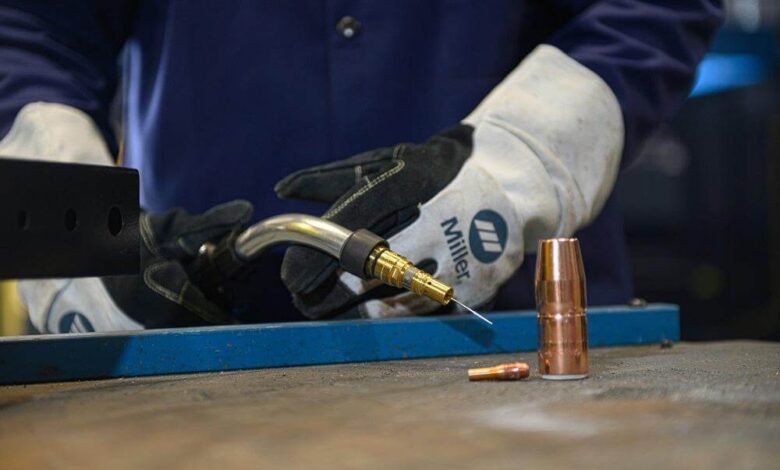Mastering the Craft: Choosing the Right Welding Gas for Quality Workmanship

Welding is both an art and a science, involving the fusion of materials to create strong, durable connections. Essential to the process is not only the skill of the welder but also the selection of appropriate consumables and equipment. Among the critical choices to be made is the selection of the right welding gas, which plays a key role in the quality, efficiency, and overall success of welding operations. This article takes a detailed look at the considerations involved in choosing the right welding gas for any given welding task.
Understanding the Role of Welding Gas
Welding gases are not a one-size-fits-all solution; they vary significantly based on their properties and their effect on the welding process. Some gases are used to shield the weld area from atmospheric gases such as oxygen, nitrogen, and water vapour, which could contaminate the weld and lead to defects such as porosity or excessive spatter. Other gases can influence the welding arc characteristics, bead shape, and weld penetration.
Types of Welding Gas
There are several types of welding gases available, each of which has different properties and applications. The most common gases used in welding include Argon, Carbon Dioxide, Helium, and Oxygen, as well as various mixtures of these gases. Argon is often used for its inert properties and is favoured in TIG welding operations. Carbon Dioxide is inexpensive and is therefore commonly used in MIG welding, but it can produce a less stable arc and more spatter. Helium increases heat input and weld penetration, making it suitable for welding thicker materials.
Selecting the Right Gas for the Material
The material being welded is a primary factor in determining the appropriate welding gas. For instance, non-ferrous materials such as aluminium typically require an Argon-based gas mix, whereas for ferrous materials such as carbon steel, a mix of Argon with Carbon Dioxide may be more suitable. Stainless steel often requires a tri-mix gas that includes Argon, Carbon Dioxide, and Helium to achieve an optimal result.
Considering Welding Positions
The position in which welding is performed also impacts the choice of welding gas. When welding out of position, such as overhead or vertical welding, a gas mix that provides a more fluid weld pool and faster solidification may be beneficial. This could lead to choosing a different gas or gas mixture than what would be preferred for flat or horizontal welding positions.
Influence on Welding Speed and Quality
The chosen welding gas can influence the welding speed, which is a critical factor in commercial operations where time is money. Some gases may allow for higher welding speeds without compromising the quality of the weld, while others might slow down the process. A balance must be found between speed and the desired level of quality workmanship.
Impact on Weld Appearance
Additionally, the final appearance of the weld is an important consideration, especially where the aesthetics of the weld are paramount. Certain gases can result in a smoother, cleaner weld bead, which is particularly desirable in visible or decorative applications. It is essential to choose a gas that gives the desired visual outcome.
Health and Safety Considerations
When choosing a welding gas, health and safety considerations cannot be overlooked. Welding gases may pose various risks, such as asphyxiation or fire hazards. It is imperative to understand the properties of the gases in use and to adhere to the appropriate health and safety guidelines to ensure safe welding practices.
Cost-Effectiveness and Availability
The cost of welding gas is a critical factor, especially for large-scale or continuous welding operations. It is vital to balance the cost of the gas with the benefits it provides. Additionally, the availability of the gas is crucial; selecting a gas that is not readily available in the welder’s locale can result in unnecessary downtime and loss of productivity.
Equipment Compatibility
The welding equipment in use may also dictate the choice of welding gas. Some gases require specific types of regulators, hoses, and other equipment. Ensuring compatibility between the gas and the equipment is vital for maintaining a safe and efficient welding operation.
Expert Consultation
For those unfamiliar with the subtleties of welding gas selection, consulting with industry experts can save time and resources. While expertise and experience play a large part in the selection process, leveraging the knowledge of professionals in the field can lead to a more informed decision.
Continuous Learning and Experimentation
As the welding industry evolves with new materials and technologies, so too does the understanding of how different welding gases affect the process. Welders must keep abreast of these changes and be willing to experiment with new gases and mixtures to remain competitive and produce high-quality work.
Conclusion
Selecting the right welding gas is a critical decision for ensuring high-quality welds and efficient welding operations. By taking into account the material, welding position, process speed, weld appearance, health and safety, cost, availability, and equipment compatibility, welders can make an informed choice that will aid in achieving craftsmanship of the highest standard. It is not a decision to be taken lightly, and, where possible, expert guidance should be sought to navigate the complexities of this crucial aspect of welding.
In the journey of mastering the craft of welding, every element plays a significant role, none less so than the welding gas used. By thoroughly understanding and carefully selecting the right gas for each job, welders not only enhance the strength and durability of their welds but also reinforce their reputation for quality workmanship in a field where excellence is paramount.




